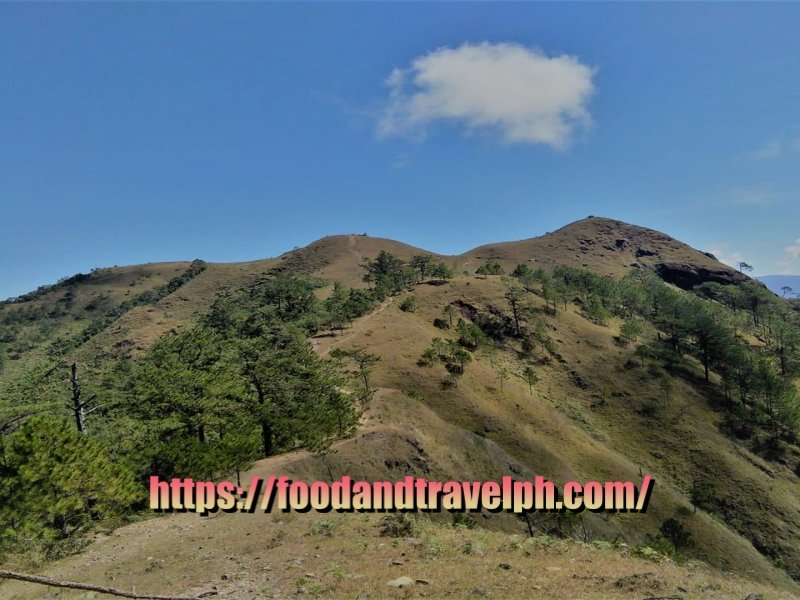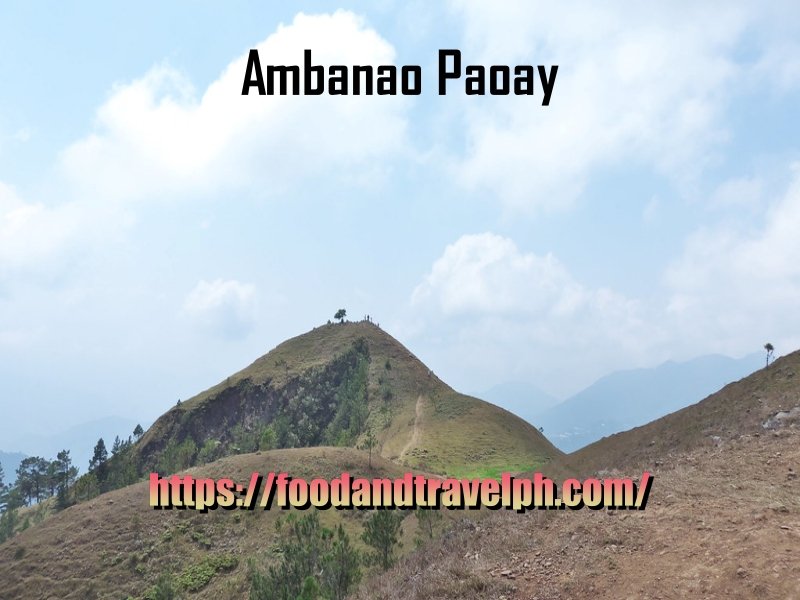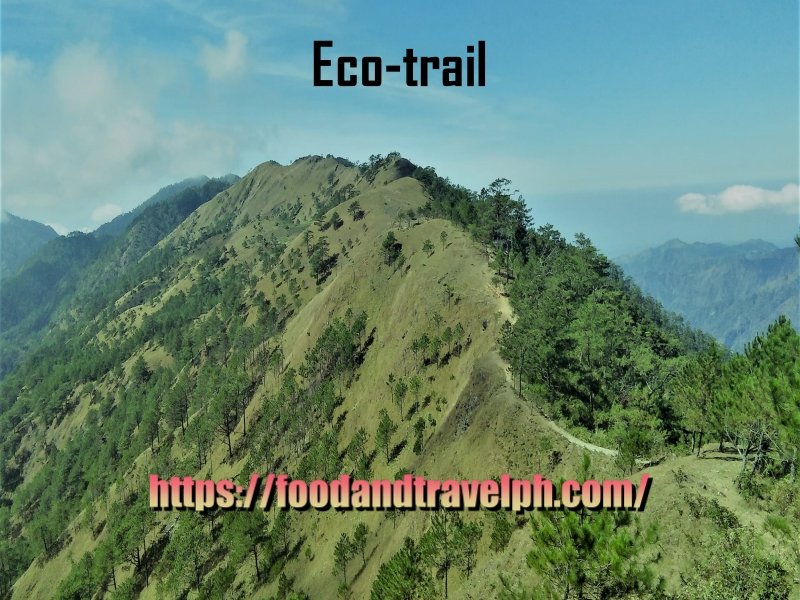Mt. Ulap

Mt.Ulap is a popular hiking destination located in the Cordillera region of the Philippines, specially in Itogon Benguet. It is part of the larger Mount Ulap Eco-trail, which offers stunning views of the surrounding mountains and valleys. The trail is known for its scenic landscapes, including rolling hills, pine forests, and rocky outcrops, making it a favorite among nature lovers and adventure seekers.
Mount Ulap provides a rewarding hiking experience that combines natural beauty, cultural richness, and a manageable level of physical challenge. It is an excellent choice for those seeking a day hike with breathtaking views and an opportunity to connect with the natural environment. As with any outdoor activity, hikers are encouraged to practice Leave No Trace principles, respect local customs, and ensure their safety by preparing adequately for the hike. Whether you’re a seasoned hiker or a novice looking to explore the Philippine mountains, Mount Ulap offers an unforgettable adventure.
- Trail Information
- Difficult level
- The trail is often considered moderate, suitable for beginners with some hiking experience. It involves a combination of ascents and descents, with some steep sections.
- Trail Length
- Approximately 9 kilometers long, the trek usually takes around 4-6 hours to complete, depending on pace and weather condition.
- Elevataion
- The peak if Mount Ulap stands at approximately 1,846 meters (6,056 feet) above sea level.
- Difficult level
- Attractions
- Gungal Rock– a popular photo spot, this rock formation offers panoramic views of the surrounding landscape and is one of the highlights of the hike.
- Ambanao Paoay– Another peak along the trail, providing stunning visits and a sense of accomplishment for hikers reaching its summit.
- Eco-trail– The entire trail is part of an eco-tourism initiative, designed to promote sustainable tourism and preserve the natural beauty of the area.
- Flora anf Fauna
- The trail is rich in biodiversity, with various species of plants and animals native to the Cordillera region. Pine trees dominate the landscape, and hikers may encounter local wildlife such as birds and small mammals.
- Cultural Significance
- The area is inhabited by indigenous communities, and the trail sometimes features cultural landmarks and traditions that offer insight into the local Igorot culture.
- Tour Guide Fee
- The tour guide fee usually costs around Php400.00-Php600.00, depending on the number of hikers in the group. It is mandatory to have a guide for security and a trail guide.
Tips
- Prepare Physically– Even if the difficulty level of the trails is only moderate, it is good to prepare physically to make the hike more enjoyable.
- Wear Proper Gear– Use comfortable hiking shoes, breathable clothing and bring a jacket for the cold climate at the top.
- Pack Essentials– Bring water, snacks, sunscreen, and a first-aid kit. Don’t forget the rain gear in case it rains.
- Start Early– It is better if you start early to avoid heat and enjoy the view at the summit more.
- Leave No Trace– Make sure to take all trash home to maintain the cleanliness of the mountain.
- Respect Local Culture– Be respectful to the locals and follow the rules of the area.
- Best time to visit– Dry season (November-April) this is the best time to visit for better weather and clearer scenery. Avoid the rainy season as the trail is slippery and muddy.
- Before climbing, it is advisable to inquire at the local tourism office or travel agencies in Benguet for updated information and possible changes in fees and policies.
Where you can stay at Mt.Ulap
Microtel by Wyndham Baguio

Microtel by Wyndham Baguio is a well-regarded hotel located in the heart of Baguio City, Philippines. Known for its convenient locations, the hotel provides easy access to popular attractions such as Burnham Park, Session Road, and SM City Baguio. It is a part of the Wyndham Hotels and Resorts group, which is known for offering comfortable and affordable accommodations worldwide.

Microtel offers a range of amenities designed to enhance the guest experience. The hotel feature comfortable rooms. Some rooms may also offer scenic views of surrounding area. Guests can enjoy a complimentary breakfast, and there is a restaurant on-site serving a variety of dishes. The hotel also offers meeting and event facilities, making it a suitable choice for both leisure and business traveler. Additional services include 24-hour front desk assistance, laundry services, and free parking.
The room here you can choose from Queen Suite, Queen Room, and Queen Room with two beds. The price depends on the day you go and how many people you are. You can book through booking.com, agoda.com and their website.
The hotel review is:
Staff: 8.8/10 ⭐⭐⭐⭐⭐⭐⭐⭐⭐✰
Location: 9.0/10 ⭐⭐⭐⭐⭐⭐⭐⭐⭐✰
Value of Money: 8.0/10 ⭐⭐⭐⭐⭐⭐⭐⭐✰✰
Facilities: 7.9/10 ⭐⭐⭐⭐⭐⭐⭐⭐✰✰
Comfort: 8.4/10 ⭐⭐⭐⭐⭐⭐⭐⭐✰✰
Free Wi-Fi: 7.4/10 ⭐⭐⭐⭐⭐⭐⭐✰✰✰
Cleanliness: 8.4/10 ⭐⭐⭐⭐⭐⭐⭐⭐✰✰
How to go to Mt.Ulap
Via Bus Manila to Baguio
- From Metro Manila, take a bus heading to Baguio City. Several bus companies offer this route such as Victory Liner and Genesis, with terminals located in areas like Cubao and Pasay. Buses run frequently, and the journey takes around 4-6 hours depending on traffic.
Baguio to Ampucao
- Upon arriving in Baguio, head to the Baguio City public terminal and look for a jeepney or van going to Ampucao, Itogon. The trip takes about 45 minutes to an hour.
Nearby attractions
- Burnham Park– This is one of the most iconic parks in Baguio, named after the American architect Daniel Burnham who designed it. The park features a large man-made lake where visitors can enjoy boat rides. It also has beautiful gardens, picnic areas, biking lanes, and a skating rink, making it a favorite spot for both locals and tourists.
- Mines View Observation Deck– Located on a promontory, this deck offers a panoramic view of the surrounding mountains and the abandoned gold and copper mines of the Benguet region. Visitors can enjoy the cool breeze, take photos with traditional Igorot attire, and shop for souvenirs and local handicrafts.
- Botanical Garden– Also known as the Igorot Village, this is a peaceful retreat with a variety of plant species native to the region. It houses beautiful landscapes, walking trailsm and cultural displays, including traditional Igorot huts, providing insight into the indigenous culture.
- Good Shepherd Convent– Famous for its products made by nuns, such as ube jam, strawberry jam, and other local delicacie. The convent s also a serene place, offering a peaceful atmosphere and beautiful views of the surrounding hills.
- Wright Park– Known for its “Pool of Pines” a rectangular pool surrounded by towering pines trees. It’s popular spot for horseback riding, with horses and ponies available for rent. Visitors can also stroll along the picturesque walkways lined with flowers and trees.
- Lion’s head– This is an iconic landmark located along Kennon Road, carved from a limestone boarder. Standing about 40 feet tall, it serves as a symbol of Baguio and a ppopular phot-op for travelers heading to the city.
- Our Lady of Lourdes Grotto– A Catholic Shrine and pilgrimage site, accessible by climbing a steep staircase of over 200 steps. At the top, visitors are greeted by a statue of the Virgin Mary and a breathtaking view of the city, making the climb well worth the effort.
- The Mansion– The official summer residence of the President of the Philippines. The Mansion features a majestic main gate, which is one of the most photographed sections of the property. Visitors can view the building from the outside and stroll through its well-maintained gardens.
- Camp John Hay– Originally a rest and recreation facility for American soldiers, it is now a popular resort and tourist destination, It offers a range of activities, including golfing, hiking, and zip-lining as well as accommodations and dining options, all set amidst a lush pine forest.
Famous Food
- Strawberries and Strawberry Products– Baguio and nearby La Trinidad are famous for their strawberries. You can enjoy fresh strawberies, strawberry taho and strawberry jams.
- Ube Jam– Made from purple yam, this sweet spread is a popular product in the area, often bought as a pasalubong (souvenir).
- Pinikpikan– A traditional Cordilleran dish made with chicken, often flavored with etag (cured meat).
- Baguio Longganisa and Tocino– Local versions of these Filipino breakfast staples, usually available in Baguio markets.
- Fresh Vegetables– Due to the cool climate, Baguio is known for its fresh produce, especially leafy greens and root crops.
Yukgaejang: The Ultimate Korean Spicy Beef Soup Recipe
How to cook Yukgaejang Yukgaejang is a vibrant and flavorful Korean beef soup known for its rich, sp…
A Guide to Making Delicious Ojingeo-Bokkeum (Spicy stir fried squid)
Ojingeo-Bokkeum (Spicy stir fried squid) Recipe Ojingeo-Bokkeum (Spicy stir fried squid), a fiery an…
Coconut Bliss: The Magic of Adobong Manok sa Gata
Adobong Manok sa Gata Recipe Adobong Manok sa Gata is a Filipino dish that beautifully marries the c…
Savor the Flavors of the Philippines: A Guide to Cooking Chicken Afritada
How to cook Chicken Afritada Chicken Afritada is a popular Filipino dish that features chicken piece…
Deliciously Nutritious: How to Cook Ginisang Munggo
Munggo Recipe Ginisang Munggo is a popular Filipino dish made primarily from mung beans, often enjoy…
Exploring the World of Korean Banchan: 15 Must-Try Side Dishes
How to make Korean Banchan Korean cuisine is renowned for its rich flavors and diverse dishes, and o…


















Leave a Reply